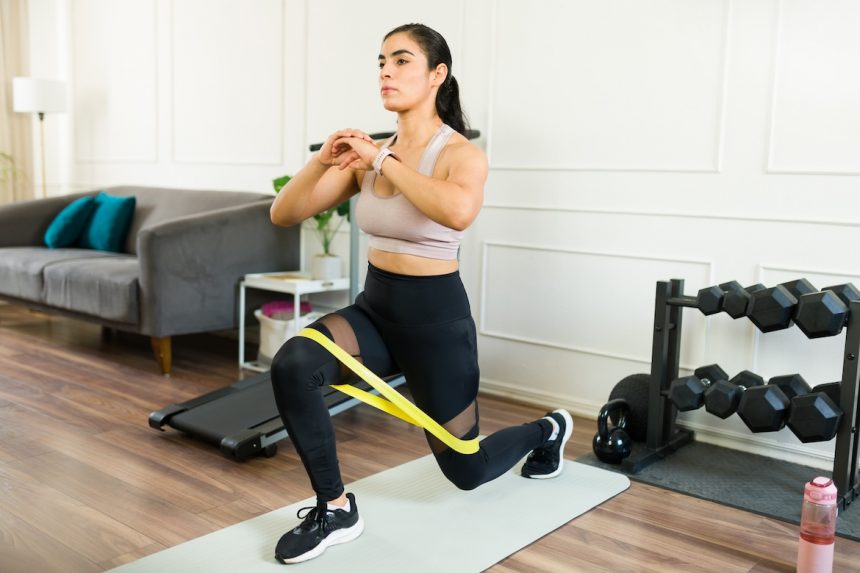There’s something incredibly satisfying about the idea of focusing a workout on one area of your body and tiring it out until you feel that sweet, sweet burn. Maybe that’s one reason why split workouts—where you focus on different areas of your body or muscle groups on different days—are so popular, especially in the age of the fitness influencer, says Laura Girard, CPT, a NASM-certified personal trainer and founder of the online fitness studio The Energy Academy. For one, it’s easier to make clickable content around “leg day,” for instance, than it is around a more balanced full-body workout, Girard says. And, “the fitness industry loves to glamorize suffering,” Girard says, and those split workouts often lead to more muscle soreness than full-body workouts with their more-concentrated efforts. But there are some major benefits to split workouts, too: There’s more potential for hypertrophy and muscle growth and more time to spend thoroughly challenging each muscle group. But full-body workouts also come with their own slate of lifestyle and physiological perks, like efficiency. This begs the question: Which workout option is right for you? We dive into everything you need to know about full-body workouts versus split workouts so you can make the best decision for your fitness. Related Stories Full-body workouts Benefits The best workout for you is the one you’re actually going to do and that fits into your schedule. For many busy people, full-body workouts make more sense for efficiency’s sake. “Full-body workouts allow you to train multiple muscle groups in a single session, often using compound movements that engage several muscles simultaneously,” says Stephen Ranellone, CSCS, FRCms, FMS, an exercise physiologist at the Hospital for Special Surgery. “This can be very efficient, especially if you can only work out one or two times a week. These sessions can also increase caloric expenditure, which is beneficial for fat loss and improving conditioning.” Unlike in split workouts, where it’s usually necessary to rest between sets, full-body workouts allow you to switch to a new muscle group rather than taking a break, Girard points out—a win for both efficiency and for building endurance. Full-body workouts can also be more stimulating for your mind, according to Annie Ho, CPT, a certified personal trainer and exercise physiologist. They can be safer for people with orthopedic issues or injuries. “Whole-body movement promotes better movement mechanics and stability,” she says. There’s also the benefit of hitting all your major muscle groups multiple times a week, assuming you’re able to fit in more than one full-body workout (unlike in a split routine, when you may only hit each area once a week). The best workout for you is the one you’re actually going to do and that fits into your schedule. Drawbacks Because full-body workouts challenge so many muscle groups, they often require some serious recovery, Ranellone says. He recommends taking 24 to 48 hours after a full-body session in order to avoid overtraining and fatigue. This also means that you can only do so many full-body sessions in a week (Ho recommends capping it at three, at least to start), unlike in a split routine where you can hit legs one day and upper body the next. Another limitation of full-body workouts: You won’t be able to achieve the same volume per muscle group as you would in a split routine, Ranellone says. Translation? It’ll be difficult to make hypertrophy gains, meaning if you have specific goals related to building muscle, full-body workouts probably won’t be enough for you. Split workouts Benefits If you’re looking to build strength and/or muscle and have the time to devote to it, a split routine might be for you. “One advantage of focusing on one muscle group per workout is that it allows for a higher volume of sets and reps, which is beneficial for hypertrophy and strength development,” Ranellone says. “You can spend more time targeting the muscle from different angles, enhancing your ability to challenge and stimulate it effectively.” You can also recover more quickly from a split workout, considering it’ll only be one area of your body that’s tired. “Say you’re sore from leg day, the next day you could hit arms and shoulders,” Ho says. There’s also the downright satisfaction of that “leg day” feeling, Girard says. “For some people, knowing they’re going to show up at the gym and it’s just legs, they’re going to feel that satisfaction factor, which is huge in adherence,” she says. “That’s going to have a huge motivational benefit.” “If you’re so sore that it’s getting in the way of life, what are you training for?” —Laura Girard, CPT Drawbacks Hitting all your muscle groups (back, arms, chest, core, legs, etc.) in a true split workout routine requires a number of sessions that just may not be reasonable for your schedule or your lifestyle. And though having sore hamstrings from leg day won’t necessarily stop you from doing arm day tomorrow, it’s possible that those hamstrings will be very, very sore due to the isolated work (so you’ll probably only be able to work them once a week or so). “If you’re hitting your legs intensely enough to make progress, that may get in the way of your other daily activities,” Girard says. “If you go to the gym and then it hurts to sit down on the toilet for a week, it’s not going to be that appealing to show up again. If you’re so sore that it’s getting in the way of life, what are you training for?” Split workouts can also start to feel repetitive and perhaps even boring, with so much time doing the same exercises for the same muscles, Ho says. And, a poorly planned split routine can lead to muscle imbalances, with some groups being overworked and others neglected, she says. Full-body workout vs. split workout: the bottom line Ranellone recommends considering the amount of time you have, your experience level, and your goals when deciding whether full-body or split workouts are best for you. If you’re a beginner or only have time to work out one or two days a week, opt for full-body sessions. If you’re more experienced, have more time to work out, or are hoping to build muscle, split sessions might be a better fit. And remember: You don’t have to go all-or-nothing on one or the other. Mixing some full-body and some split sessions into your routine can give you access to the benefits of both, as long as you program in enough recovery. “Don’t overthink it,” Girard says. “It’s not that deep, and whatever sounds more appealing is going to be the thing you do, so start there. And then if it’s not working for you, don’t be afraid to change it up.” . If the provided articles seems to be less than 200 characters or it is an intro of the author, then try to generate an articles using this title. Full-Body Workout vs. Split Workout: What’s the Difference?






